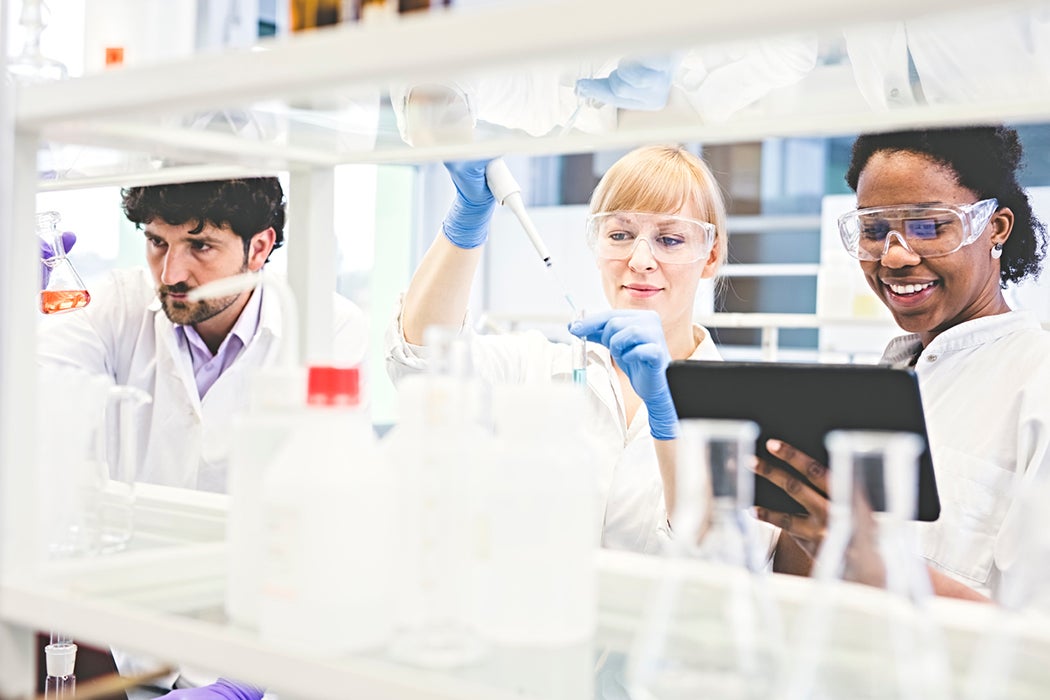The world is in a constant state of flux and species are in a constant battle for survival, often competing for the same resource. In the past, when rot attacked fruit trees, harvesters suffered. When one species in an ecosystem died off, others proliferated, often spiraling out of control. As scientists learn more about the world we live in, can they get better at keeping pathogens at bay, preserving species, and restoring ecosystems to their natural balance? It seems that all over the world, researchers are trying to do just that. Will they succeed?
Fighting for a Foothold (Biographic)
Once abundant in California waters, the population of white abalone, a large sea snail with the scientific name Haliotis sorenseni, shrunk to about 2,000 isolated survivors. While commercial abalone fishing has been banned after the population collapsed towards the end of the 20th century, the mollusks are also afflicted by a Withering Foot Syndrome that deteriorates their foot muscle, making them lose their grip on the ocean floor, critical for survival. Worse yet, the plague seems to be temperature-dependent. Under optimal conditions, abalone can contract the illness and fight it off without any symptoms. But as soon as the water temperature reaches 64 to 68 degrees Fahrenheit, the disease kicks in, killing the mollusk within months.
White abalone is critical not only to the ocean ecosystems’ health, but to human well-being. When abalone populations decline, the sea urchins they normally feed on proliferate, chewing down kelp forests that protect coastlines from storms. To restore the population, University of California scientists breed the troubled species in labs and then set them loose into the sea. In this fertility clinic of sorts, technicians wait for the females to spawn and then hurry to fertilize their eggs with droppers full of males’ sperm.
A Battle to Save the World’s Favorite Treat: Chocolate (The New York Times)
Cultivated down to a few varieties we favor, all of which have similar genetic traits and defects, cacao crops are struggling against changing weather and pathogens. One of the crops’ most vicious enemies is frosty pod rot, also called monilia, a fungal infection caused by Moniliophthora roreri, which turns cacao pods frosty white. Other diseases such as witches’ broom, black pod, and swollen-shoot virus also wreak havoc on the world’s favorite crop. A narrow gene pool means that the most commonly grown cacao types are susceptible to the same plagues, so diseases spread like wildfire. When frosty pod rot hit Costa Rica in 1983, its cacao production fell by 96 percent and never recovered. That’s why one scientist is cultivating a hybrid, disease-resistant form of cacao, which shows promise so far.
Avoiding Extinction (Hakai Magazine)
The vaquita porpoise, the world’s smallest marine mammal, which makes its home in the Gulf of California, is teetering on the brink of extinction. With graceful bodies, panda-like eyes, and a mouth upturned into a permanent smile, these shy creatures are seen so rarely than some people don’t believe they exist. When humans do see them, it is because the animals are stuck in gill nets cast by fishermen catching shrimp, sharks, and other fish. The Mexican government tried to restrict gill net use, but attempts to develop vaquita-safe nets dragged out for years, leaving fishermen stranded without a good alternative to the equipment they already had. In the early 2000s, scientists estimated that barely 150 porpoises still dwelled in the gulf. Now there may be fewer than 30.
As a matter of last resort, scientists plan to use trained dolphins to hunt down the last few remaining vaquitas of the gulf, capture them, and transfer them to holding facilities, with the hope to institute a breeding program of some sort. But will the vaquitas make it?







